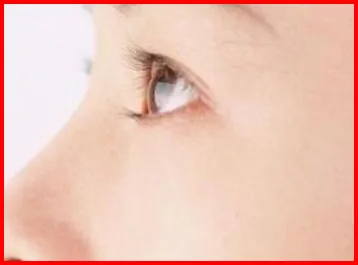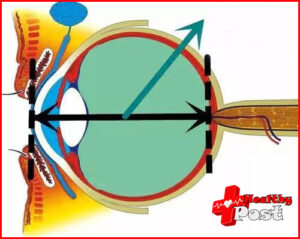
How to Relieve Eye Pain
There are many reasons for eye pain, the most common of which is overuse or eye strain. Working in a poorly lit room, driving for long periods of time, not wearing glasses when you need them, or staring at something for too long (like a computer screen) can all cause eye strain. Eye pain can also be caused by headaches, glaucoma, a foreign object in the eye, sinus infections, and inflammation. If your eyes are sore after a long day, there are some things you can do yourself to relieve your eye pain.
Eliminate eye fatigue
1. Use eye drops.
Moisturizing dry eyes with eye drops or artificial tears can relieve eye pain. You can use regular saline (the same concentration of salt in tears) or medicated eye drops. Follow the manufacturer’s instructions.
Don’t become too dependent on eye drops. If you use eye drops regularly, make sure they don’t contain medications or preservatives. Overuse of medicated eye drops can actually make eye problems worse.

2. Apply warm compresses.
This will relax the muscles around your eyes, which can relieve eye fatigue and the sensation of twitching (spasmodic) muscles around your eyes. You can apply a dry or wet compress (depending on whichever makes you feel most comfortable). If you wear glasses or contact lenses, remove them before applying the warm compress.
Dry compress: Place uncooked rice or beans in a clean sock and tie a knot to seal. Microwave for 30 seconds, or until warm but not too hot. Apply to eyes.
Wet compress: Wet a clean washcloth or several tissues with warm (almost hot, but not too hot) water. Apply to eyes. Press down gently with the palm of your hand if you want, but don’t apply too much pressure. Keep applying until the compress cools.
3. Use your palms to cover your eyes.
Gently press your palms against your eyes to help reduce eye fatigue and relieve pain. If you wear glasses or contact lenses, remember to take them off before applying your palms to your eyes. Here are the specific steps:
a. Cross your hands with your palms facing yourself.
b. Gently press your eyes with your palms.
c. Hold for 30 seconds, then relax. Repeat the above steps as often as needed to relieve pain.
4. Use herbal tea bags to apply to your eyes.
Some herbs, such as chamomile, have anti-inflammatory properties and may soothe your eyes. Although there is no scientific evidence that tea bags are more effective than other warm compresses, the aroma of herbal tea may help you relax.
Place 2 tea bags in a mug and pour in boiling water. Steep for 5 minutes, or until the water is no longer hot but still feels warm.
Squeeze the excess liquid out of the tea bags and place one over each eye. Lean your head back and relax. Remove the tea bags once they have cooled. Repeat as many times as you like.
Don’t have tea bags? Cut off the toe of your nylon socks, pour dried herbs into the toe, tie a knot, and use it as a tea bag.
Avoid using black or green tea bags on your eyes. These teas contain high levels of tannins, which may damage delicate eyelid tissue.
5. Roll your eyes.
Every teenager likes to roll their eyes. In fact, rolling your eyes can help relieve eye fatigue. Close your eyes, focus on deep breathing, and do the following actions at the same time:
a. Roll your eyes clockwise. Then roll them counterclockwise. Roll them once in both directions to complete the movement.
b. Repeat eye rolling 20 times. Start slowly at first, then increase the speed slightly each time.
c. Do this 2 to 4 times a day to help relieve and prevent eyestrain.
6. Give your eyes a break frequently.
Follow the 20-20-20 rule and give your eyes a break several times a day. Rest your eyes every 20 minutes by staring at an object at least 6 meters away for at least 20 seconds. Staring at a computer screen for a long time without a break can cause eye pain, headaches, and even muscle pain.
Every hour, try to stand up, walk around, and shake your body. This will refresh your mind and prevent eye strain in the first place.
7. Relax.
Anxiety, stress, and muscle tension can cause eye fatigue and pain. Take a few deep breaths, shake your limbs, and rotate your neck. Get up and take a quick walk. Do some stretching exercises. You can also use progressive muscle relaxation to relax your eye muscles and relieve pain and fatigue.
If possible, find a quiet, comfortable place with no distractions. Take a deep breath and keep it even. Try to tighten your eyelids as much as possible. Hold this tension for 10 seconds, then relax. Open your eyes. Raise your eyebrows as high as you can, as if you are opening your eyes as wide as possible. Hold this position for 10 seconds, then relax. Repeat these two exercises as needed throughout the day.
Prevent eye pain
1. Keep your eyes moist.
Looking at a computer screen for a long time actually reduces the number of times you blink, which can cause your eyes to become dry. Try to blink as often as possible to keep your eyes moist. If you still feel dry eyes, you can try artificial tears.
Do not use eye drops containing preservatives more than 4 times a day. Using them too frequently can make eye problems worse! As for eye drops without preservatives, you can use them as many times as needed.
A humidifier can also help keep your eyes moisturized and refreshed.
2. Drink plenty of water.
Not drinking enough water can cause dry, itchy and painful eyes. When the body is dehydrated, it cannot produce enough tears to keep the eyes moist.
3. Remove your makeup.
Makeup can clog the oil glands in your skin, irritate your skin, and even cause infection. Be extra careful to remove all eye makeup, such as mascara and eye shadow. You can use baby shampoo or a special eye makeup remover. The most important thing is to remove all makeup every day.
4. Choose eye makeup that does not cause allergies.
You may need to experiment to find the best products for you, because even products marked as “hypoallergenic” may irritate your eyes. Try a small amount of eye makeup made for sensitive eyes first to see if you can find the best product for you.
Is makeup still causing problems? You can consult a dermatologist, who may be able to recommend makeup that won’t irritate your eyes.

5. Use an eyelid scrub.
Do you feel dry, red or itchy eyes? An eyelid scrub may help. You can use baby shampoo or a mild, non-irritating shampoo that does not contain sulfates to exfoliate your eyelids and promote the free flow of natural skin oils to better moisturize your eyes.
Wash your hands thoroughly with soap and warm water. Mix equal parts baby shampoo and warm water in a small bowl. Use a clean washcloth (one for each eye) to gently wipe your eyelashes and eyelid edges with the solution. Rinse well with clean warm water. Exfoliate twice a day.
6. Turn your back to the light.
When reading, the light reflected from the page or screen can cause glare and hurt your eyes. Place the lamp or light source behind you, turn your back to the light, or use a lamp with a lampshade.
7. Develop good habits.
Set up an ergonomic workstation to help prevent eye pain. Slouching over a computer desk not only strains your eyes, but can also cause muscle soreness and fatigue.
Stand at least 50 to 65 cm away from your computer screen. Make sure the screen is at a comfortable height so you don’t have to look down or up at it. Reduce glare.
8. Avoid smoke and other environmental irritants.
If your eyes are often red, itchy, watery or tired, you may be allergic to something in your environment. Common irritants include cigarettes, smoke and pet dander. Do you have sticky or green discharge from your eyes? See your doctor immediately. This may be a symptom of bacterial conjunctivitis or pink eye.
9. Relax.
Feeling stressed or anxious can cause eye pain. Using relaxation techniques throughout the day, even for just a few minutes, can help keep your eyes sharp.
Place your elbows on the work surface. Lower your head onto your palms with your palms facing up. Close your eyes and cover them with your hands. Take a deep breath in through your nose, allowing your belly to expand. Hold your breath for 4 seconds, then exhale slowly. Repeat several times a day for 15 to 30 seconds each time.
Massage your face. Gently massaging the muscles around your eyes can help prevent soreness. Gently rub your fingertips in circles on your upper eyelid for 10 seconds. Then repeat the same motion on your lower eyelid for 10 seconds. This massage can stimulate your tear ducts and relax your muscles.
Gently patting your face can help relieve eye strain and prevent eye pain and fatigue. Gently pat your forehead (2.5 cm above your eyebrows). Then gently pat the part where your eyebrows are curved. Gently press the area between your eyebrows. Pat the inner corner of your eyebrow, then the outer corner of your eyebrow. Finally, pinch the bridge of your nose.
10. Wear protective glasses.
If you spend a lot of time staring at a computer screen every day, wearing protective glasses may help reduce eye strain. Some glasses are designed to help prevent dry and sore eyes. Look for amber lenses that can neutralize screen glare and avoid irritating your eyes.
11. Adjust the screen.
There are many screens around us, including computers, tablets, mobile phones, and televisions. They all produce glare and cause eye fatigue. You can’t throw away the screen, but you can do something to prevent them from hurting your eyes.
Reduce blue light. Blue light is harsh and can even damage your eyes if you are exposed to it for long periods of time. Use blue light filters on your tablet and phone and turn down the backlight on your TV. When buying glasses, you can also choose anti-reflective or anti-glare lenses, which can reduce the impact of blue light on your eyes.
Purchase anti-glare filters to place on your computer and television screens. You can also lower the contrast on your computer screen.
Clean your screen regularly. Dust, grease and smudges can cause glare and strain your eyes.


One thought on “How to Relieve Eye Pain”